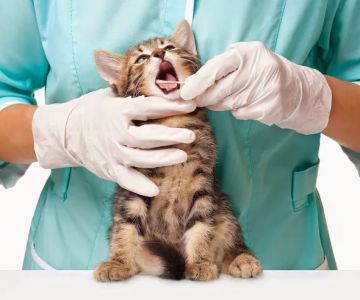What to Do If Your Pet Has a Wound or Injury: Essential Steps Every Pet Owner Should Know
As a pet owner, there’s nothing more distressing than seeing your beloved animal in pain or hurt. Whether it’s a small cut from a playful adventure or a more serious injury, knowing how to act quickly can make a significant difference in the recovery process. In this guide, I'll walk you through the crucial steps to take if your pet has a wound or injury, helping you feel confident in managing the situation until you can get professional care if necessary.
1. Assessing the Severity of the Injury
The first thing you need to do when your pet has a wound or injury is to assess how severe it is. This can be tricky, especially when pets are in pain and anxious, but it’s essential to stay calm and take a good look at the wound. If your pet has a minor scrape or cut that is not bleeding excessively, you can usually handle it at home. However, more serious injuries such as deep punctures, heavy bleeding, or broken bones require immediate professional care.
For example, when my dog, Charlie, cut his paw while running through the woods, I immediately checked the size of the wound. It was small, but it was bleeding, so I knew I had to act quickly to clean the area and stop the bleeding.
2. Stopping the Bleeding
One of the most crucial steps in treating a wound on your pet is stopping any bleeding. If the injury is bleeding profusely, apply gentle pressure to the wound with a clean cloth or gauze. Hold the pressure for several minutes until the bleeding slows or stops. If the bleeding doesn’t stop after a few minutes, it’s time to contact a vet for further assistance.
In my case, when Charlie’s paw started bleeding, I used a clean bandage to apply gentle pressure, being careful not to cause him additional pain. After a few minutes, the bleeding had stopped, and I could proceed to clean the wound properly.
3. Cleaning the Wound
Once the bleeding has slowed or stopped, it’s time to clean the wound. Use a mild antiseptic solution that is safe for pets, or you can use saline solution to gently rinse the wound. Avoid using hydrogen peroxide or alcohol, as they can irritate your pet’s skin and delay healing.
I remember feeling a little nervous when I cleaned Charlie’s wound, but I was careful to rinse it thoroughly and gently with saline solution. The key is to be gentle and avoid causing any additional pain. After cleaning, I made sure the area was dry before applying any ointment or dressing.
4. Applying a Bandage
If the wound is located in an area where it could get dirty or irritated, it’s important to apply a bandage to protect it. Use a sterile dressing, followed by a bandage, to cover the wound. Make sure the bandage is not too tight, as this can restrict circulation and cause more harm than good. It’s important to check the bandage regularly to ensure it stays clean and dry.
When Charlie’s paw was bandaged, I kept an eye on him to make sure he didn’t chew at the bandage. I also used a protective cone to prevent him from licking the area, which could introduce bacteria and slow healing.
5. Monitoring Your Pet for Infection
Infections are a major concern when it comes to pet wounds, so it’s essential to keep an eye on the injury as it heals. Watch for signs of infection such as redness, swelling, heat, or discharge coming from the wound. If you notice any of these symptoms, it’s time to visit your vet for further treatment.
For several days after Charlie’s injury, I monitored his paw closely. Thankfully, there were no signs of infection, but I kept the area clean and made sure to follow the vet’s instructions on how to care for the wound until it healed completely.
6. When to Seek Professional Veterinary Care
While you can handle minor cuts and scrapes at home, there are certain situations where you should seek professional care right away. If your pet has a deep puncture wound, broken bone, severe bleeding that won’t stop, or shows signs of shock, don’t hesitate to contact your veterinarian or the nearest emergency animal hospital. Sometimes, even small injuries can become serious if not treated promptly and correctly.
In one instance, my neighbor’s cat, Max, got into a fight with another animal, resulting in a deep puncture wound on his side. Despite initial attempts to clean it at home, the wound showed signs of infection. His owner took him to the vet, and Max was treated promptly, preventing the infection from spreading.
7. Preventing Future Injuries
While accidents are sometimes unavoidable, there are steps you can take to reduce the risk of injuries for your pet. Regularly check your home and yard for hazards that might cause injuries. Ensure your pet has proper training and supervision when playing, especially in environments where they might get hurt. Additionally, regular check-ups with your veterinarian can help identify potential health issues before they lead to accidents or injuries.
Since Charlie’s injury, I’ve become much more aware of his environment. I make sure to keep sharp objects out of reach and ensure he’s supervised when exploring areas that might have rough terrain. Preventative measures like these help keep pets safe and reduce the likelihood of future injuries.
It’s always difficult to see your pet hurt, but knowing how to respond effectively can make all the difference. Whether it’s a small scrape or a more serious injury, these steps will help you take the right actions to care for your pet’s wound and ensure they’re on the path to recovery. And remember, when in doubt, always reach out to your veterinarian for guidance and support.











